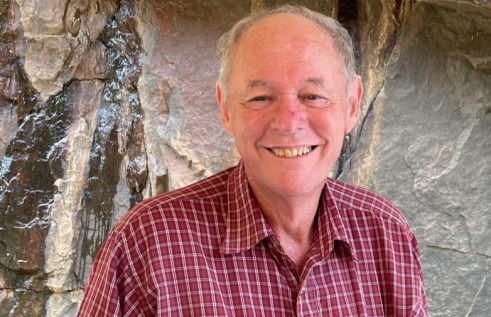RIEL seminar series
Fish and floodplains: drivers of barramundi migration in the Top End
| Presenter | Dr Brien Roberts | |
|---|---|---|
| Date |
|
|
| Time |
to
|
|
| Contact person | E: riel.outreach@cdu.edu.au | |
| Location | CDU Casuarina Campus Yellow 1.1.39 and online | |
| Open to | Public | |
Migration is a fundamental aspect of the lifecycle of many animals and enables individuals to exploit habitats and resources that are geographically separated from breeding sites. Movement patterns are often highly variable among individuals, which may have profound implications for the productivity and resilience of populations and the ecosystem services (e.g., fisheries) they provide. Diadromous fishes, which undergo migrations between marine and freshwater habitats, are exemplars of such behavioural flexibility, which makes them ideal candidates to investigate the mechanisms that underpin migration. My PhD research uses barramundi as a model species to explore the causes and consequences of variable migratory behaviour within populations. Overall, my findings underscore the importance of productive freshwater habitats for barramundi populations and highlight the complexity of trade-offs between life history characteristics and individual fitness. I argue that hydrological variability, which characterises northern Australian rivers, plays a key role in enhancing the productivity of important commercial, recreational and subsistence fisheries. My research outlines the threats to tropical riverine and coastal fisheries imposed by increasing demand for freshwater resources, emphasising the need to incorporate the preservation of life history diversity into the goals of sustainable development.
Brien Roberts is a recent PhD graduate with RIEL at Charles Darwin University. He has a keen and lifelong interest in aquatic biology, and will be in part presenting his thesis, titled ‘Drivers of catadromous migration in barramundi in the wet/dry tropics of northern Australia’. He is currently working as an aquaculture scientist with NT Fisheries.
Related Events

Boring beetles and super models: mapping the distribution of a new invader
The polyphagous shot-hole borer (PSHB) is a tiny beetle with a mouthful of a name, but it’s been making headlines as a new invasive species in Australia. PSHB was first detected in Perth three years ago and has since devastated trees across the city. There are concerns about what its further spread could mean for urban, agricultural and natural environments.
Read more about Boring beetles and super models: mapping the distribution of a new invader
Groundwater: Hidden wonder of the Northern Territory
The seminar ‘Groundwater: Hidden wonder of the Northern Territory’ will be presented in two parts. First, Steven will provide a basic explanation of what groundwater is and concepts of how groundwater systems operate. He will then give an NT-wide view of groundwater properties and processes.
Read more about Groundwater: Hidden wonder of the Northern Territory
Carbon and water adventures in north Australia
With climate change and increasing land use pressures there is more and more demand for knowledge of carbon dynamics and water use as well as water resource management. Lindsay’s research is focused on providing better understanding of the biophysical environment of tropical land and water systems.
Read more about Carbon and water adventures in north Australia
